Zhengru Fang
Task-Oriented Communications for Visual Navigation with Edge-Aerial Collaboration in Low Altitude Economy
Apr 29, 2025Abstract:To support the Low Altitude Economy (LAE), precise unmanned aerial vehicles (UAVs) localization in urban areas where global positioning system (GPS) signals are unavailable. Vision-based methods offer a viable alternative but face severe bandwidth, memory and processing constraints on lightweight UAVs. Inspired by mammalian spatial cognition, we propose a task-oriented communication framework, where UAVs equipped with multi-camera systems extract compact multi-view features and offload localization tasks to edge servers. We introduce the Orthogonally-constrained Variational Information Bottleneck encoder (O-VIB), which incorporates automatic relevance determination (ARD) to prune non-informative features while enforcing orthogonality to minimize redundancy. This enables efficient and accurate localization with minimal transmission cost. Extensive evaluation on a dedicated LAE UAV dataset shows that O-VIB achieves high-precision localization under stringent bandwidth budgets. Code and dataset will be made publicly available: github.com/fangzr/TOC-Edge-Aerial.
Decoder Gradient Shield: Provable and High-Fidelity Prevention of Gradient-Based Box-Free Watermark Removal
Feb 28, 2025



Abstract:The intellectual property of deep image-to-image models can be protected by the so-called box-free watermarking. It uses an encoder and a decoder, respectively, to embed into and extract from the model's output images invisible copyright marks. Prior works have improved watermark robustness, focusing on the design of better watermark encoders. In this paper, we reveal an overlooked vulnerability of the unprotected watermark decoder which is jointly trained with the encoder and can be exploited to train a watermark removal network. To defend against such an attack, we propose the decoder gradient shield (DGS) as a protection layer in the decoder API to prevent gradient-based watermark removal with a closed-form solution. The fundamental idea is inspired by the classical adversarial attack, but is utilized for the first time as a defensive mechanism in the box-free model watermarking. We then demonstrate that DGS can reorient and rescale the gradient directions of watermarked queries and stop the watermark remover's training loss from converging to the level without DGS, while retaining decoder output image quality. Experimental results verify the effectiveness of proposed method. Code of paper will be made available upon acceptance.
Channel-Aware Throughput Maximization for Cooperative Data Fusion in CAV
Oct 06, 2024Abstract:Connected and autonomous vehicles (CAVs) have garnered significant attention due to their extended perception range and enhanced sensing coverage. To address challenges such as blind spots and obstructions, CAVs employ vehicle-to-vehicle (V2V) communications to aggregate sensory data from surrounding vehicles. However, cooperative perception is often constrained by the limitations of achievable network throughput and channel quality. In this paper, we propose a channel-aware throughput maximization approach to facilitate CAV data fusion, leveraging a self-supervised autoencoder for adaptive data compression. We formulate the problem as a mixed integer programming (MIP) model, which we decompose into two sub-problems to derive optimal data rate and compression ratio solutions under given link conditions. An autoencoder is then trained to minimize bitrate with the determined compression ratio, and a fine-tuning strategy is employed to further reduce spectrum resource consumption. Experimental evaluation on the OpenCOOD platform demonstrates the effectiveness of our proposed algorithm, showing more than 20.19\% improvement in network throughput and a 9.38\% increase in average precision (AP@IoU) compared to state-of-the-art methods, with an optimal latency of 19.99 ms.
Direct-CP: Directed Collaborative Perception for Connected and Autonomous Vehicles via Proactive Attention
Sep 13, 2024Abstract:Collaborative perception (CP) leverages visual data from connected and autonomous vehicles (CAV) to enhance an ego vehicle's field of view (FoV). Despite recent progress, current CP methods expand the ego vehicle's 360-degree perceptual range almost equally, which faces two key challenges. Firstly, in areas with uneven traffic distribution, focusing on directions with little traffic offers limited benefits. Secondly, under limited communication budgets, allocating excessive bandwidth to less critical directions lowers the perception accuracy in more vital areas. To address these issues, we propose Direct-CP, a proactive and direction-aware CP system aiming at improving CP in specific directions. Our key idea is to enable an ego vehicle to proactively signal its interested directions and readjust its attention to enhance local directional CP performance. To achieve this, we first propose an RSU-aided direction masking mechanism that assists an ego vehicle in identifying vital directions. Additionally, we design a direction-aware selective attention module to wisely aggregate pertinent features based on ego vehicle's directional priorities, communication budget, and the positional data of CAVs. Moreover, we introduce a direction-weighted detection loss (DWLoss) to capture the divergence between directional CP outcomes and the ground truth, facilitating effective model training. Extensive experiments on the V2X-Sim 2.0 dataset demonstrate that our approach achieves 19.8\% higher local perception accuracy in interested directions and 2.5\% higher overall perception accuracy than the state-of-the-art methods in collaborative 3D object detection tasks.
Secure Traffic Sign Recognition: An Attention-Enabled Universal Image Inpainting Mechanism against Light Patch Attacks
Sep 06, 2024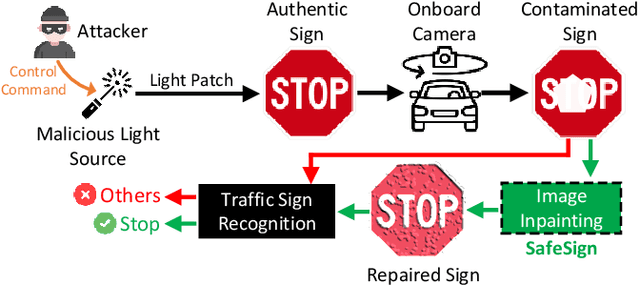


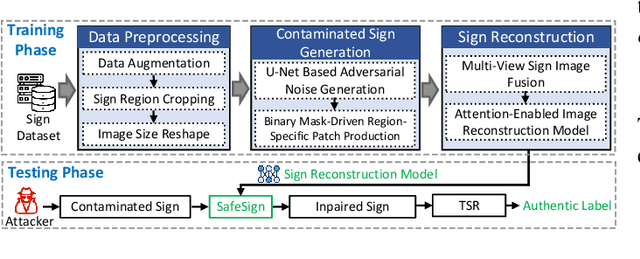
Abstract:Traffic sign recognition systems play a crucial role in assisting drivers to make informed decisions while driving. However, due to the heavy reliance on deep learning technologies, particularly for future connected and autonomous driving, these systems are susceptible to adversarial attacks that pose significant safety risks to both personal and public transportation. Notably, researchers recently identified a new attack vector to deceive sign recognition systems: projecting well-designed adversarial light patches onto traffic signs. In comparison with traditional adversarial stickers or graffiti, these emerging light patches exhibit heightened aggression due to their ease of implementation and outstanding stealthiness. To effectively counter this security threat, we propose a universal image inpainting mechanism, namely, SafeSign. It relies on attention-enabled multi-view image fusion to repair traffic signs contaminated by adversarial light patches, thereby ensuring the accurate sign recognition. Here, we initially explore the fundamental impact of malicious light patches on the local and global feature spaces of authentic traffic signs. Then, we design a binary mask-based U-Net image generation pipeline outputting diverse contaminated sign patterns, to provide our image inpainting model with needed training data. Following this, we develop an attention mechanism-enabled neural network to jointly utilize the complementary information from multi-view images to repair contaminated signs. Finally, extensive experiments are conducted to evaluate SafeSign's effectiveness in resisting potential light patch-based attacks, bringing an average accuracy improvement of 54.8% in three widely-used sign recognition models
AgentsCoMerge: Large Language Model Empowered Collaborative Decision Making for Ramp Merging
Aug 07, 2024Abstract:Ramp merging is one of the bottlenecks in traffic systems, which commonly cause traffic congestion, accidents, and severe carbon emissions. In order to address this essential issue and enhance the safety and efficiency of connected and autonomous vehicles (CAVs) at multi-lane merging zones, we propose a novel collaborative decision-making framework, named AgentsCoMerge, to leverage large language models (LLMs). Specifically, we first design a scene observation and understanding module to allow an agent to capture the traffic environment. Then we propose a hierarchical planning module to enable the agent to make decisions and plan trajectories based on the observation and the agent's own state. In addition, in order to facilitate collaboration among multiple agents, we introduce a communication module to enable the surrounding agents to exchange necessary information and coordinate their actions. Finally, we develop a reinforcement reflection guided training paradigm to further enhance the decision-making capability of the framework. Extensive experiments are conducted to evaluate the performance of our proposed method, demonstrating its superior efficiency and effectiveness for multi-agent collaborative decision-making under various ramp merging scenarios.
AgentsCoDriver: Large Language Model Empowered Collaborative Driving with Lifelong Learning
Apr 09, 2024Abstract:Connected and autonomous driving is developing rapidly in recent years. However, current autonomous driving systems, which are primarily based on data-driven approaches, exhibit deficiencies in interpretability, generalization, and continuing learning capabilities. In addition, the single-vehicle autonomous driving systems lack of the ability of collaboration and negotiation with other vehicles, which is crucial for the safety and efficiency of autonomous driving systems. In order to address these issues, we leverage large language models (LLMs) to develop a novel framework, AgentsCoDriver, to enable multiple vehicles to conduct collaborative driving. AgentsCoDriver consists of five modules: observation module, reasoning engine, cognitive memory module, reinforcement reflection module, and communication module. It can accumulate knowledge, lessons, and experiences over time by continuously interacting with the environment, thereby making itself capable of lifelong learning. In addition, by leveraging the communication module, different agents can exchange information and realize negotiation and collaboration in complex traffic environments. Extensive experiments are conducted and show the superiority of AgentsCoDriver.
SmartCooper: Vehicular Collaborative Perception with Adaptive Fusion and Judger Mechanism
Feb 02, 2024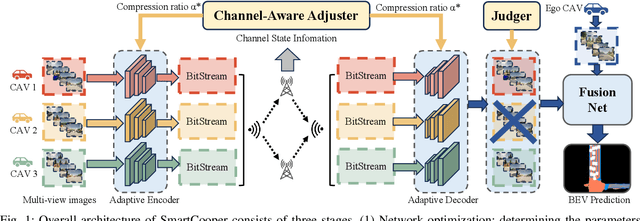
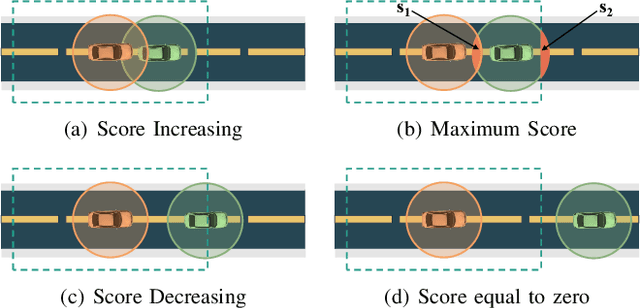
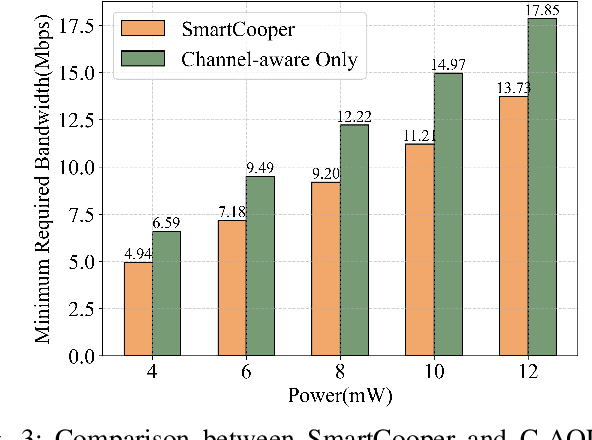
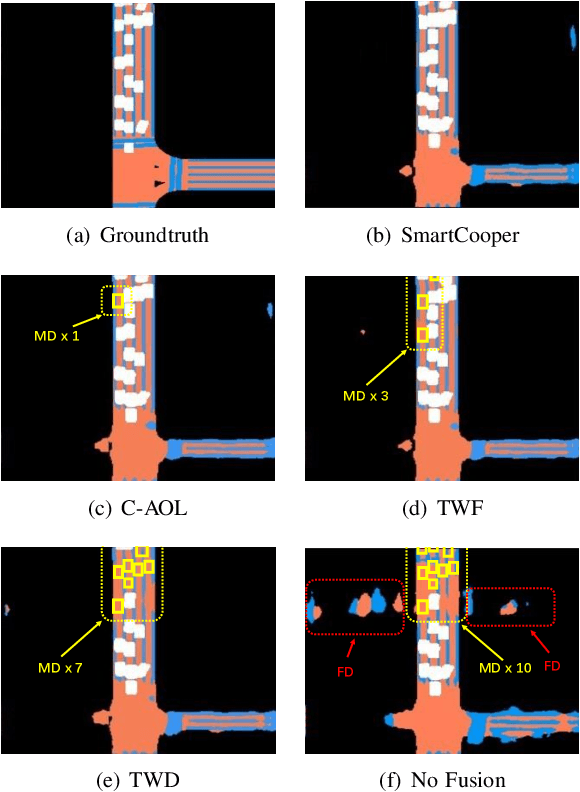
Abstract:In recent years, autonomous driving has garnered significant attention due to its potential for improving road safety through collaborative perception among connected and autonomous vehicles (CAVs). However, time-varying channel variations in vehicular transmission environments demand dynamic allocation of communication resources. Moreover, in the context of collaborative perception, it is important to recognize that not all CAVs contribute valuable data, and some CAV data even have detrimental effects on collaborative perception. In this paper, we introduce SmartCooper, an adaptive collaborative perception framework that incorporates communication optimization and a judger mechanism to facilitate CAV data fusion. Our approach begins with optimizing the connectivity of vehicles while considering communication constraints. We then train a learnable encoder to dynamically adjust the compression ratio based on the channel state information (CSI). Subsequently, we devise a judger mechanism to filter the detrimental image data reconstructed by adaptive decoders. We evaluate the effectiveness of our proposed algorithm on the OpenCOOD platform. Our results demonstrate a substantial reduction in communication costs by 23.10\% compared to the non-judger scheme. Additionally, we achieve a significant improvement on the average precision of Intersection over Union (AP@IoU) by 7.15\% compared with state-of-the-art schemes.
Collaborative Perception for Connected and Autonomous Driving: Challenges, Possible Solutions and Opportunities
Jan 03, 2024



Abstract:Autonomous driving has attracted significant attention from both academia and industries, which is expected to offer a safer and more efficient driving system. However, current autonomous driving systems are mostly based on a single vehicle, which has significant limitations which still poses threats to driving safety. Collaborative perception with connected and autonomous vehicles (CAVs) shows a promising solution to overcoming these limitations. In this article, we first identify the challenges of collaborative perception, such as data sharing asynchrony, data volume, and pose errors. Then, we discuss the possible solutions to address these challenges with various technologies, where the research opportunities are also elaborated. Furthermore, we propose a scheme to deal with communication efficiency and latency problems, which is a channel-aware collaborative perception framework to dynamically adjust the communication graph and minimize latency, thereby improving perception performance while increasing communication efficiency. Finally, we conduct experiments to demonstrate the effectiveness of our proposed scheme.
Towards Full-scene Domain Generalization in Multi-agent Collaborative Bird's Eye View Segmentation for Connected and Autonomous Driving
Nov 28, 2023Abstract:Collaborative perception has recently gained significant attention in autonomous driving, improving perception quality by enabling the exchange of additional information among vehicles. However, deploying collaborative perception systems can lead to domain shifts due to diverse environmental conditions and data heterogeneity among connected and autonomous vehicles (CAVs). To address these challenges, we propose a unified domain generalization framework applicable in both training and inference stages of collaborative perception. In the training phase, we introduce an Amplitude Augmentation (AmpAug) method to augment low-frequency image variations, broadening the model's ability to learn across various domains. We also employ a meta-consistency training scheme to simulate domain shifts, optimizing the model with a carefully designed consistency loss to encourage domain-invariant representations. In the inference phase, we introduce an intra-system domain alignment mechanism to reduce or potentially eliminate the domain discrepancy among CAVs prior to inference. Comprehensive experiments substantiate the effectiveness of our method in comparison with the existing state-of-the-art works. Code will be released at https://github.com/DG-CAVs/DG-CoPerception.git.
 Add to Chrome
Add to Chrome Add to Firefox
Add to Firefox Add to Edge
Add to Edge